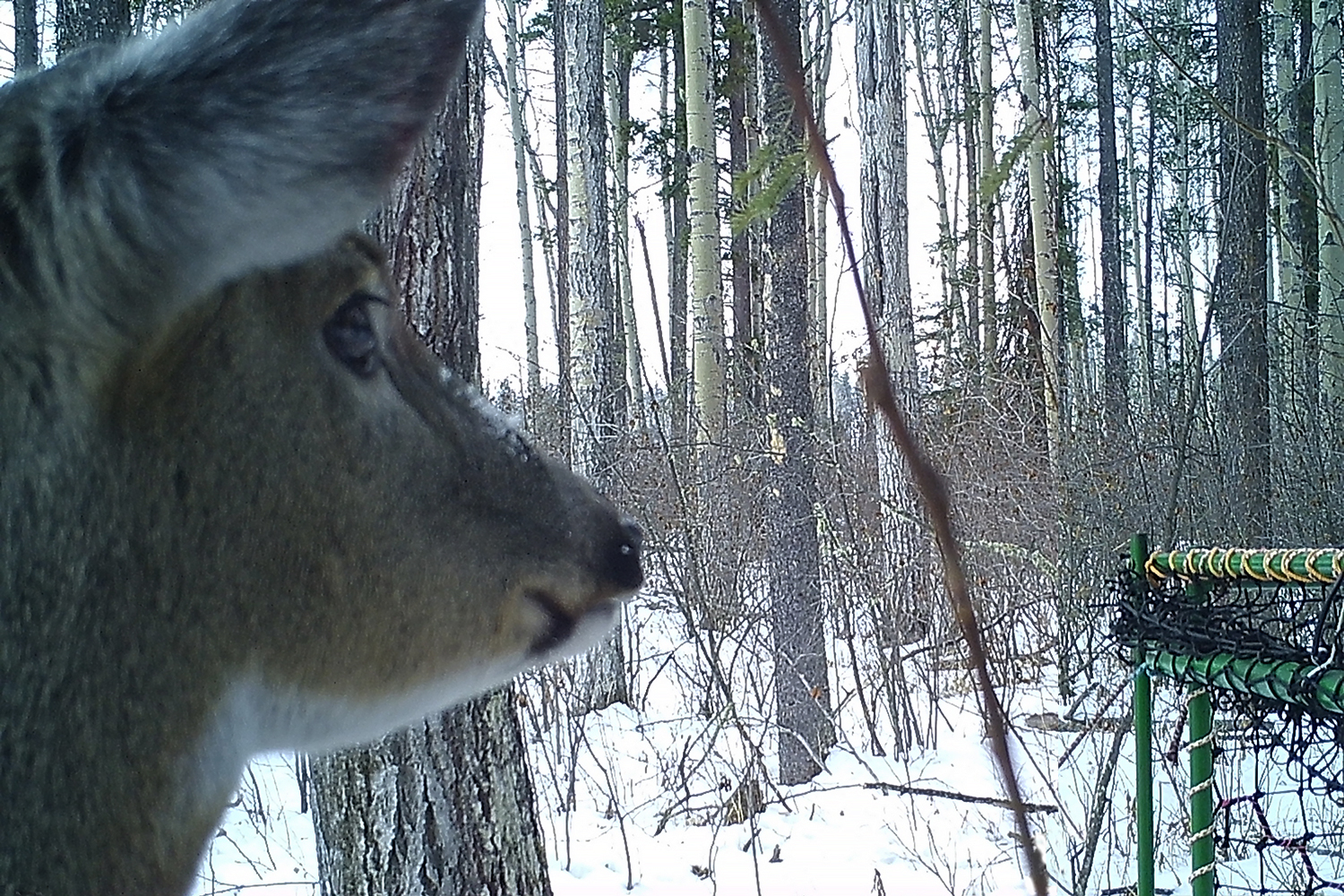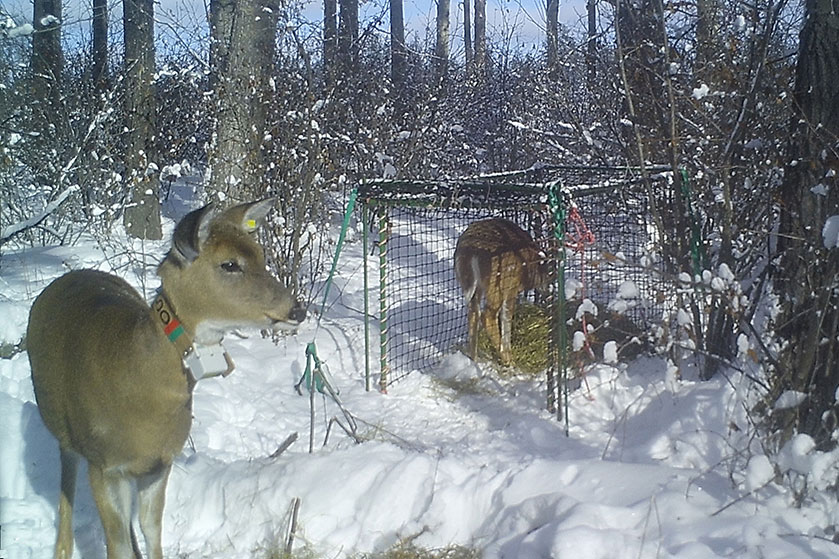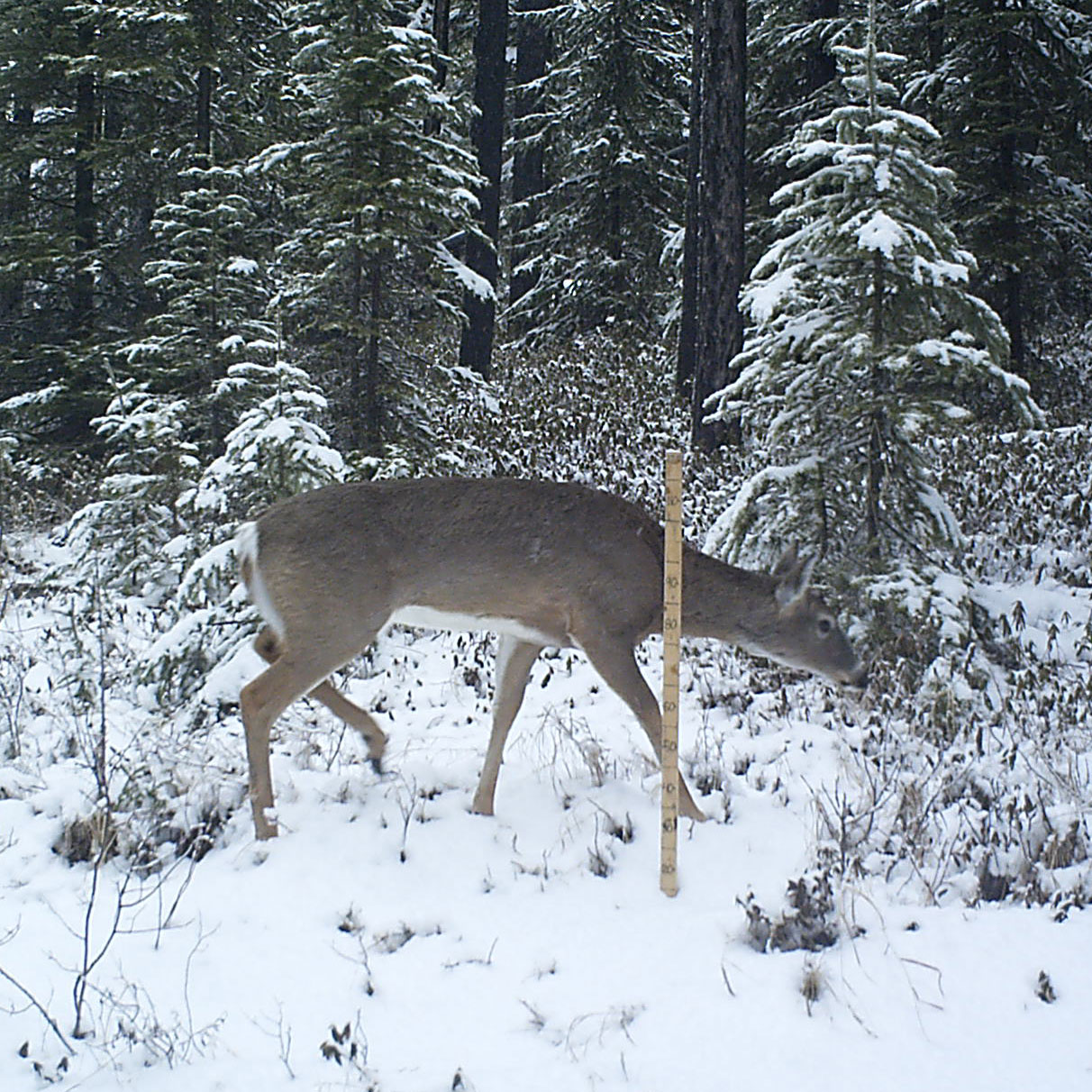
Abstract
Caribou (Rangifer tarandus) are declining worldwide. Across Canada, numerous populations have been extirpated over the past 50 years. In many cases, the mechanism of these declines is unsustainable predation exacerbated by apparent competition. Apparent competition occurs when alternate prey species, primarily deer (Odocoileus spp.) and moose (Alces americanus), increase in distribution and abundance, resulting in increased populations of predators (e.g., wolves (Canis lupus), cougar (Puma concolor), bears (Ursus spp.)) that are shared with caribou. Despite the role of white-tailed deer (Odocoileus virginianus) in apparent competition and caribou declines, relatively little is known about the resource use of this ungulate, or other apparent competitors, in west-central Alberta, Canada. I used GPS-collar locations from 2018–2022 in west-central Alberta to compare the habitat selection of white-tailed deer and mountain caribou. I then used DNA metabarcoding of fecal pellets collected in 2016 and 2022 to evaluate the diet of white-tailed deer and mountain caribou, as well as mule deer (O. hemionus), moose, and elk (Cervus canadensis) during winter. I found anthropogenic and environmental factors that may contribute to spatial overlap, or separation, between white-tailed deer and mountain caribou. Deer avoided areas with greater snow cover during winter and selected for forage availability during summer. Conversely, caribou had a non-significant response to snow cover and avoided valley bottoms but selected for ridgelines (alpine) during both seasons. I found relatively little overlap among the winter diet of the five sympatric ungulates. However, certain forage items including the Fabaceae and Lentibulariaceae families were abundant in the diet of all five ungulates and may result in shared resource use. I found DNA of lichenicolous fungi in the diet of caribou, but also white-tailed and mule deer, moose, and elk. My results provide new information on how deer, moose, and elk use the landscape in west-central Alberta, and how that compares to mountain caribou. Similarities in the spatial and diet overlap of sympatric ungulates can help inform strategies designed to mitigate the impacts of apparent competition for caribou.
Get the full thesis here.
Citation
Stevenson, S. (2023). Resource use of mountain caribou (Rangifer tarandus caribou), white-tailed deer (Odocoileus virginianus), and other sympatric ungulates, in west-central Alberta, Canada. doi:10.24124/2022/59441









